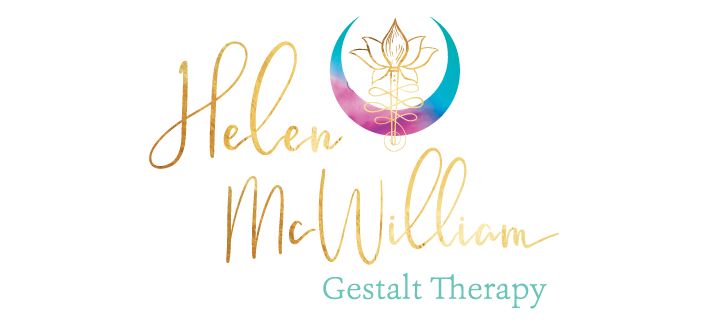From Presence to Spirit: Gestalt Therapy and the Sacred in Everyday Life
Introduction
While spirituality is not a specific methodology in Gestalt therapy, it emerges organically through presence, awareness, and relationship. Gestalt therapy honours the human being as a whole—body, mind, emotions, and spirit. It is through this holistic lens that spirit becomes present: not as something transcendent or abstract, but as something intimate, embodied, and woven into the here and now. Gestalt does not ask us to leap over our human experiences in search of enlightenment. Rather, it invites us to inhabit our humanity more fully. Spirit arises not by escaping suffering, but by making meaning of it. As Martin Buber writes, we become more human not by leaving the self behind, but by embracing the richness of the I-Thou relationship—the sacred space that emerges in true meeting.
Embodied Spirituality: Becoming Fully Human
Spirituality often begins as an inner quest, but its deeper unfolding leads us outward—to relationship, responsibility, and connection. It is not about bypassing pain or reaching otherworldly states but about meeting life in all its complexity. This path includes confronting grief, acknowledging our shadows, and deepening our compassion. In Gestalt therapy, the spiritual dimension is found in how we attend to suffering, how we stay present with what is. The client’s process becomes a sacred unfolding, a way of discovering meaning even in despair.
One client, for example, came to therapy quietly grieving the absence of her granddaughter. She was stoic at first, afraid of her own longing and the risk of loving too much. As we worked through her layers of anger and sorrow, she allowed herself to feel the depth of her loss. One day, through tears and laughter, she said with a gentle smile, “I’ll always have her in my heart. And I have the joy of connecting with other families and their children in my life.” She sighed and then drew a heart filled with images and metaphors: people she now shares life with and the bush where she lives. In that moment, we touched the sacred.
The Transpersonal in the Relational Field
Gestalt therapy emphasises that the whole is greater than the sum of its parts. In therapy, something larger than the two people in the room can emerge—a shared field, a transpersonal presence. This field is where the spiritual dimension often arises. We do not need to transcend our humanness to touch the spiritual. We only need to be present. This presence can open us to wonder, humility, and awe—in relationship, in nature, in a quiet moment of truth. It is in this space that clients can rediscover their sense of belonging to something larger. For some, this may emerge through silence. For others, through tears or creative expression. In every case, it is the therapist’s grounded presence that makes room for such sacred moments to unfold.
Awareness as Spiritual Practice
Awareness, the cornerstone of Gestalt therapy, is itself a spiritual act. Noticing what is, with compassion and without judgment, is a radical form of presence. It is how we meet the world with integrity and grace. Awareness includes noticing our limits and longings, our patterns, and our potential. It invites us to feel what it means to be human. Through this, the seemingly ordinary becomes sacred. In therapy, we often help clients slow down, not to fix themselves, but to notice. To experience a moment fully. Just like meditation or mindfulness, this kind of awareness opens us to something beyond the self—a sense of connection, of meaning, of life unfolding.
Imagination and the Soul
The soul speaks through imagination. It is nourished by images, stories, symbols, dreams, and creativity. Art, poetry, and play are natural expressions of the soul. Gestalt therapy, especially when integrated with creative processes, offers a home for this soulful way of being. The therapist who invites drawing, movement, or visualisation isn’t using a technique—they are offering care for the soul. These methods allow clients to connect with deeper truths, often beyond words. When a client draws a heart filled with images of people and place, it is not just art. It is the soul expressing its way of belonging. These expressions help restore a sense of wholeness, beauty, and peace.
Connection, Community, and Meaning
Many clients today arrive in therapy feeling isolated, disconnected, and overwhelmed by a materialistic culture. There is often a deep hunger for meaning. Gestalt therapy supports clients in finding this not only within themselves but in their relationships, communities, and in their connection to the natural world. Healing is not just individual. It includes finding our place in the greater whole. Spirituality, in this context, includes caring for others, the environment, and the wider field in which we live. It is a movement from individual healing to collective wholeness.
Conclusion: Spirit in the Everyday
Gestalt therapy holds space for the spiritual not by naming it, but by making room for it. In the presence of another, in the silence between words, in the vulnerability of authentic contact, spirit can emerge. It may come in a sigh, in a moment of laughter, in a drawing or in the stillness after tears. The therapist’s role is not to create these moments but to be open to them—to meet the client with reverence, to stay with what arises. This is how spirit lives in the field: in ordinary moments, made extraordinary by attention and care. In the shared breath of two people present to one another. In the image of a heart drawn in pastel, rooted in the bush, full of life.
Gestalt therapy, at its essence, offers a path to wholeness through presence, creativity, and relationship. In doing so, it honours the sacred in everyday life.
References
Ham, P. (2024). The Soul. Penguin Books.
Hycner, R. (1993). Between Person and Person: Toward a Dialogical Psychotherapy. The Gestalt Journal Press.
Mackewn, J. (1997). Developing Gestalt Counselling. Sage Publications.
Moore, T. (1992). Care of the Soul: A Guide for Cultivating Depth and Sacredness in Everyday Life. Harper Perennial.






